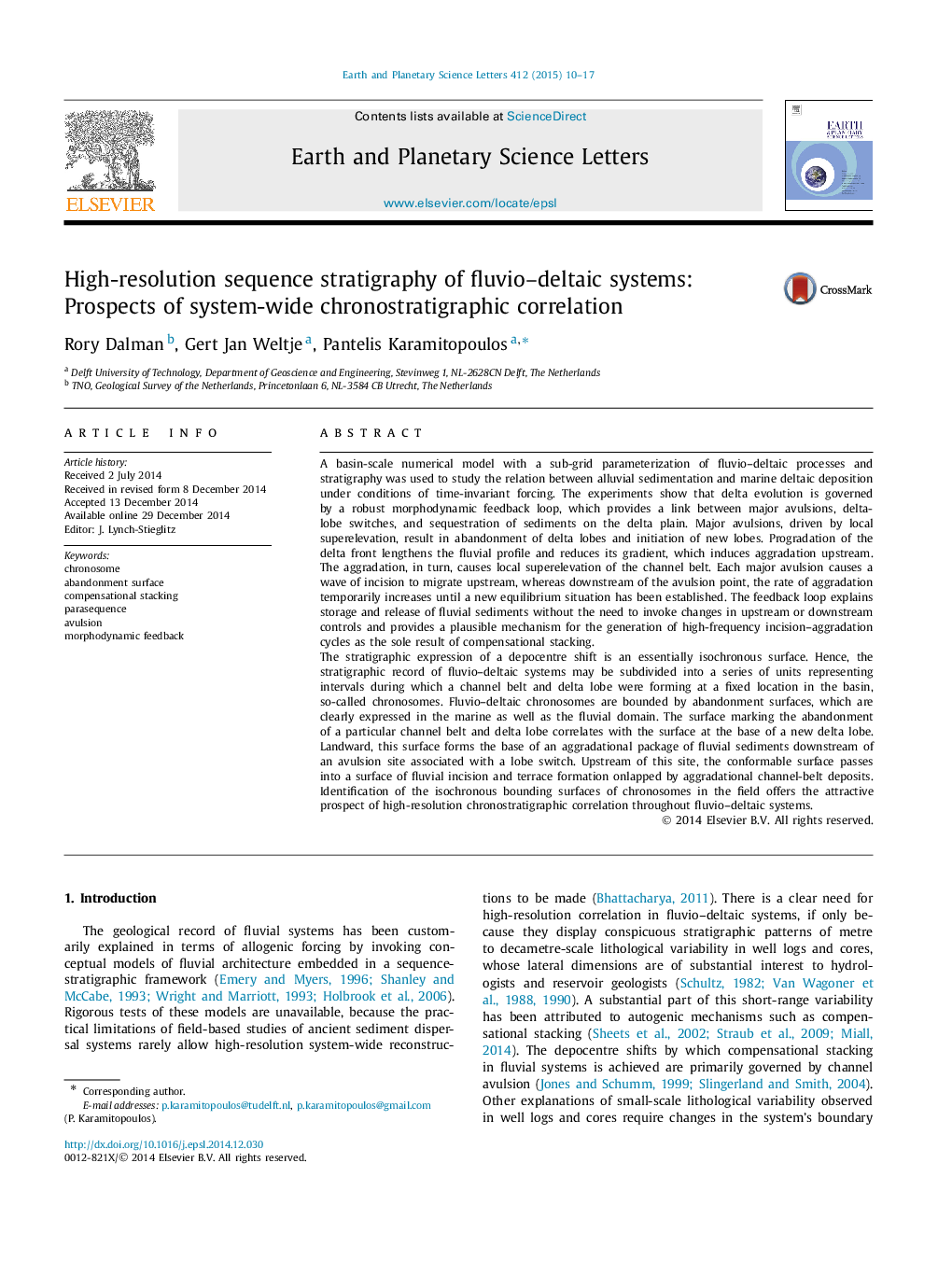| کد مقاله | کد نشریه | سال انتشار | مقاله انگلیسی | نسخه تمام متن |
|---|---|---|---|---|
| 6428625 | 1634744 | 2015 | 8 صفحه PDF | دانلود رایگان |

- Autogenic delta evolution is governed by a robust morphodynamic feedback loop.
- Feedback loops link avulsions, delta-plain aggradation and delta-lobe switching.
- Lobe switching is responsible for the generation of compensational stacking patterns.
- Depocentre shifts permit subdivision of the fluvio-deltaic stratigraphic record.
- Chronosomes allow chronostratigraphic correlation of marine to continental deposits.
A basin-scale numerical model with a sub-grid parameterization of fluvio-deltaic processes and stratigraphy was used to study the relation between alluvial sedimentation and marine deltaic deposition under conditions of time-invariant forcing. The experiments show that delta evolution is governed by a robust morphodynamic feedback loop, which provides a link between major avulsions, delta-lobe switches, and sequestration of sediments on the delta plain. Major avulsions, driven by local superelevation, result in abandonment of delta lobes and initiation of new lobes. Progradation of the delta front lengthens the fluvial profile and reduces its gradient, which induces aggradation upstream. The aggradation, in turn, causes local superelevation of the channel belt. Each major avulsion causes a wave of incision to migrate upstream, whereas downstream of the avulsion point, the rate of aggradation temporarily increases until a new equilibrium situation has been established. The feedback loop explains storage and release of fluvial sediments without the need to invoke changes in upstream or downstream controls and provides a plausible mechanism for the generation of high-frequency incision-aggradation cycles as the sole result of compensational stacking.The stratigraphic expression of a depocentre shift is an essentially isochronous surface. Hence, the stratigraphic record of fluvio-deltaic systems may be subdivided into a series of units representing intervals during which a channel belt and delta lobe were forming at a fixed location in the basin, so-called chronosomes. Fluvio-deltaic chronosomes are bounded by abandonment surfaces, which are clearly expressed in the marine as well as the fluvial domain. The surface marking the abandonment of a particular channel belt and delta lobe correlates with the surface at the base of a new delta lobe. Landward, this surface forms the base of an aggradational package of fluvial sediments downstream of an avulsion site associated with a lobe switch. Upstream of this site, the conformable surface passes into a surface of fluvial incision and terrace formation onlapped by aggradational channel-belt deposits. Identification of the isochronous bounding surfaces of chronosomes in the field offers the attractive prospect of high-resolution chronostratigraphic correlation throughout fluvio-deltaic systems.
Journal: Earth and Planetary Science Letters - Volume 412, 15 February 2015, Pages 10-17